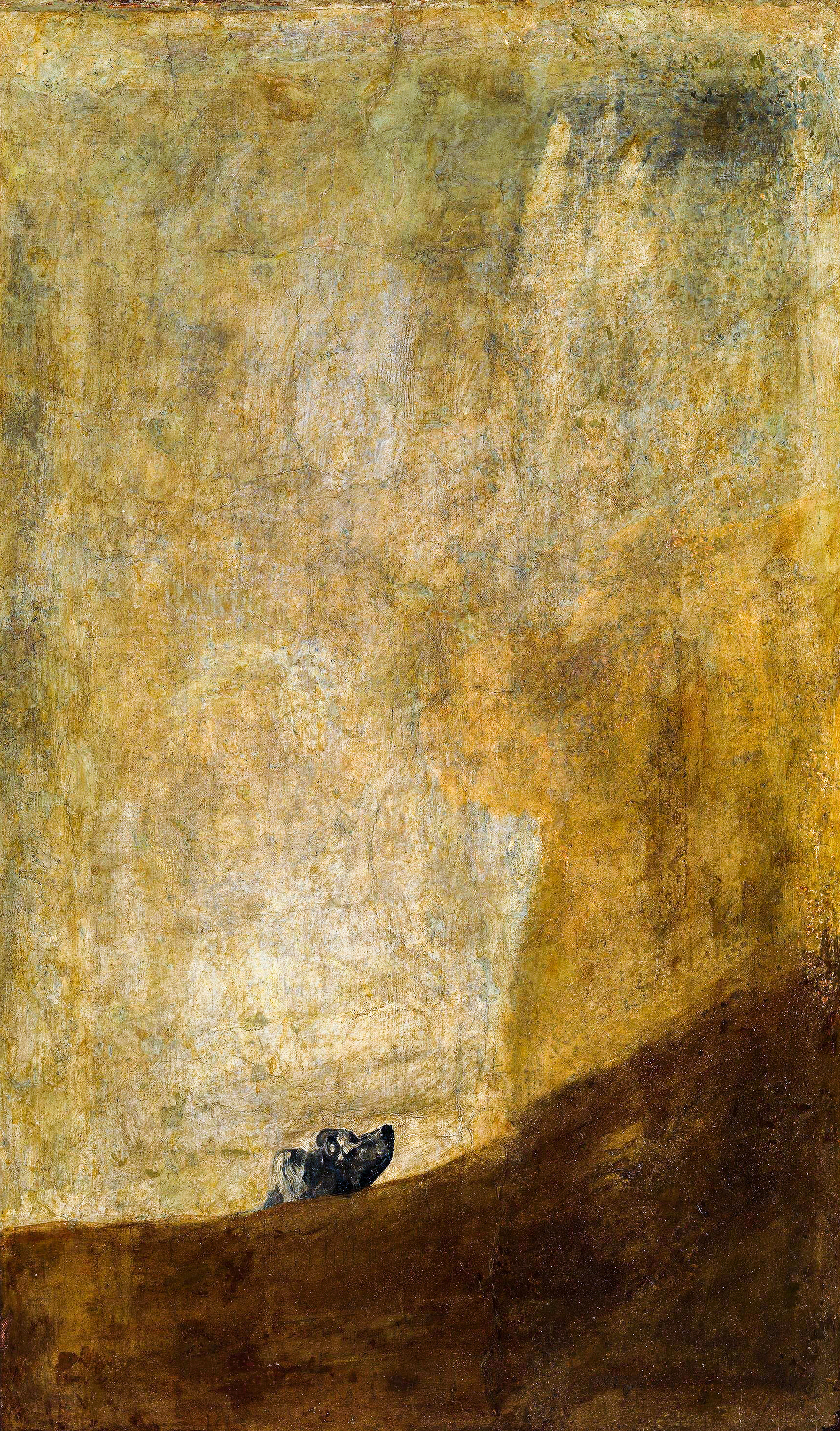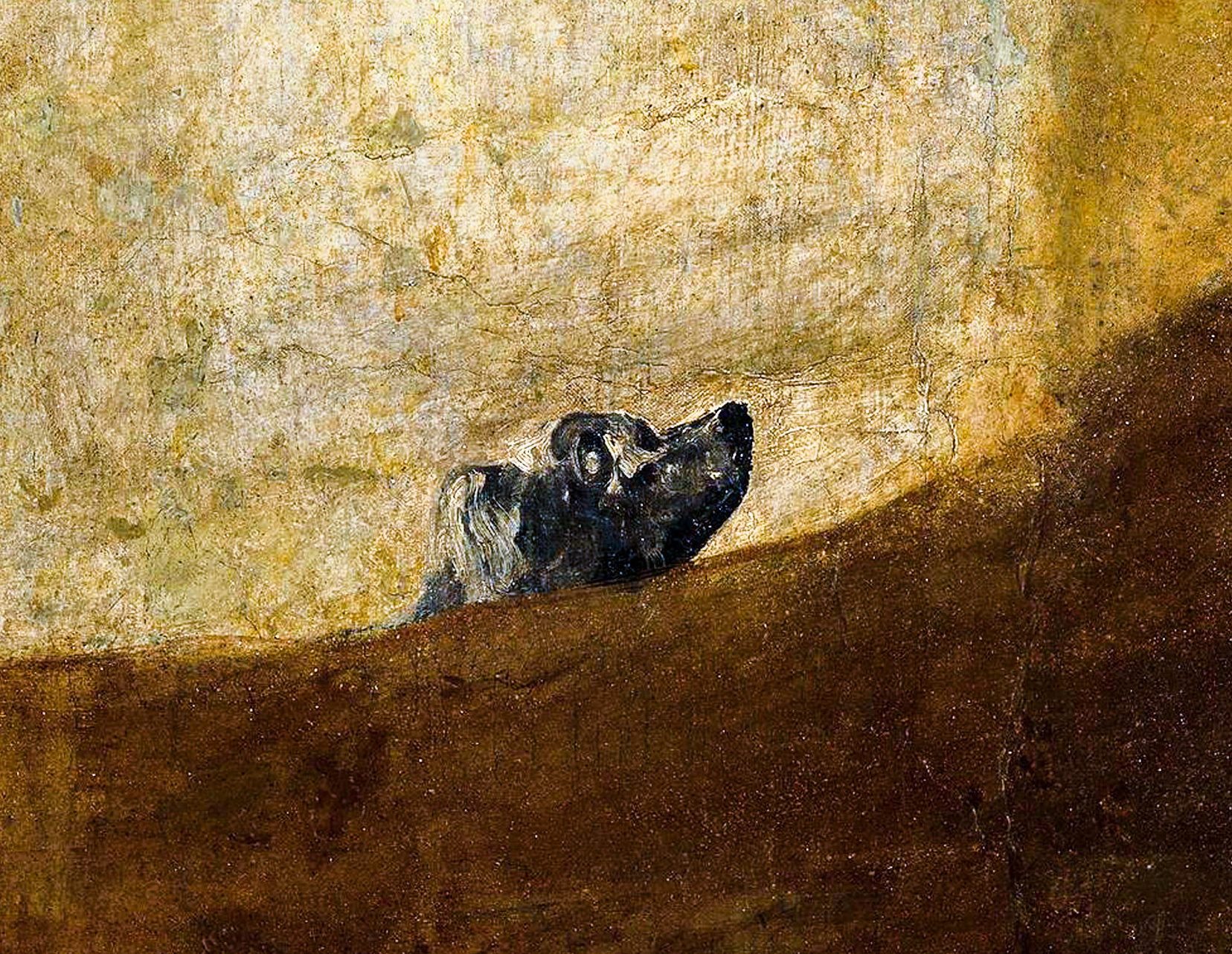My Favourite Painting: Dame Helen Mirren
Dame Helen Mirren chooses her favourite painting for Country Life.


Dame Helen Mirren says:
‘The sky is a strange yellow, omnipresent and streaked with rain. Is the dog caught, trapped in the earth and looking at her own death, or just poking her head out after a deluge? I love dogs and I love paintings of dogs. Here, the look in her eyes is so utterly doglike–fearful and hopeful, but humble, too. To me, this work tells the tale of humanity trapped in its earthly form, contemplating the vastness of the universe and the mystery of life. It is also by my favourite painter, a humane, romantic, imaginative and conscience-driven artist.’ Dame Helen Mirren is an Oscar-winning actress.

Art critic John McEwen comments:
'There are no rules in painting,’ declared Goya publicly in 1792, when he was deputy director of the Royal Academy of San Fernando. Divina natura represented Truth, as opposed to the adulation of the Antique, the art of the Classical world taught in the European academies. Two decades later, Beethoven jotted in a notebook: ‘Give up opera and all the rest, write only in your own manner.’ Goya is to 19th century painting what Beethoven is to its music, a mighty force for imaginative freedom.
Both became deaf in middle age, which seems only to have deepened their inner lives. Goya is nowhere more timeless and mysterious than in this mural, later categorised as one of the Black Paintings with which he decorated the country retreat he bought outside Madrid in 1819, subsequently called The Deaf Man’s House. The Black Paintings are about terror and the void, The Dog least explicitly and most poignantly of all. The title, as with the other Black Paintings, was added after he died, when the murals were laid on canvas and removed.
The Dog has several titles, each reflecting a different interpretation. André Malraux merely wrote of it ‘we search for a meaning’. By the time Goya executed the Black Paintings, he had experienced the full gamut of war and foreign occupation. He had served both the Spanish and the briefly imposed Napoleonic court. Friendships had been betrayed, ideals compromised, atrocities witnessed. His isolation was as political as it was physical. In 1824, he went into permanent exile in France.'
This article was first published in Country Life, March 3, 2010
Exquisite houses, the beauty of Nature, and how to get the most from your life, straight to your inbox.
Country Life is unlike any other magazine: the only glossy weekly on the newsstand and the only magazine that has been guest-edited by HRH The King not once, but twice. It is a celebration of modern rural life and all its diverse joys and pleasures — that was first published in Queen Victoria's Diamond Jubilee year. Our eclectic mixture of witty and informative content — from the most up-to-date property news and commentary and a coveted glimpse inside some of the UK's best houses and gardens, to gardening, the arts and interior design, written by experts in their field — still cannot be found in print or online, anywhere else.
-
 Jnane Rumi, Marrakech, hotel review: 'The most talked about opening this year — and for good reason'
Jnane Rumi, Marrakech, hotel review: 'The most talked about opening this year — and for good reason'The Moroccan capital of Marrakech is the world capital of hotels, says Christopher Wallace — and Jnane Rumi is the latest string to its hospitality bow.
-
 Breathtaking views and gardens that run down to the water's edge at this delightful home in Cornwall
Breathtaking views and gardens that run down to the water's edge at this delightful home in CornwallThe Garden House in Polruan sums up the appeal of waterside living. Penny Churchill steps inside.
-
 My favourite painting: Allan Mallinson
My favourite painting: Allan MallinsonMilitary historian Allan Mallinson picks an image of 'faith, generosity and ultimate sacrifice'.
-
 My Favourite Painting: Piet Oudolf
My Favourite Painting: Piet Oudolf'One cannot sense whether he is far out on the ocean or closer to shore, or what he may be watching or feeling in that moment as he stares towards the beach.’
-
 My Favourite Painting: Mary Plazas
My Favourite Painting: Mary Plazas'There is compassion, awe, humility, a knowing yet a questioning in the glistening eyes. It moves me, it inspires me beyond the need to know.’
-
 My favourite painting: Robert Kime
My favourite painting: Robert KimeRobert Kime shares his fondness for New Year Snow by Ravilious
-
 My Favourite Painting: Anna Pavord
My Favourite Painting: Anna PavordAnna Pavord chooses a picture which reminds her of where she grew up
-
 My favourite painting: The Duchess of Wellington
My favourite painting: The Duchess of WellingtonThe Duchess of Wellington chooses her favourite painting for Country Life.
-
 My favourite painting: Maureen Lipman
My favourite painting: Maureen LipmanMaureen Lipman chooses her favourite painting for Country Life.
-
 My favourite painting: Jacqueline Wilson
My favourite painting: Jacqueline Wilson'I looked at this painting and decided to write about a Victorian circus girl one day'
